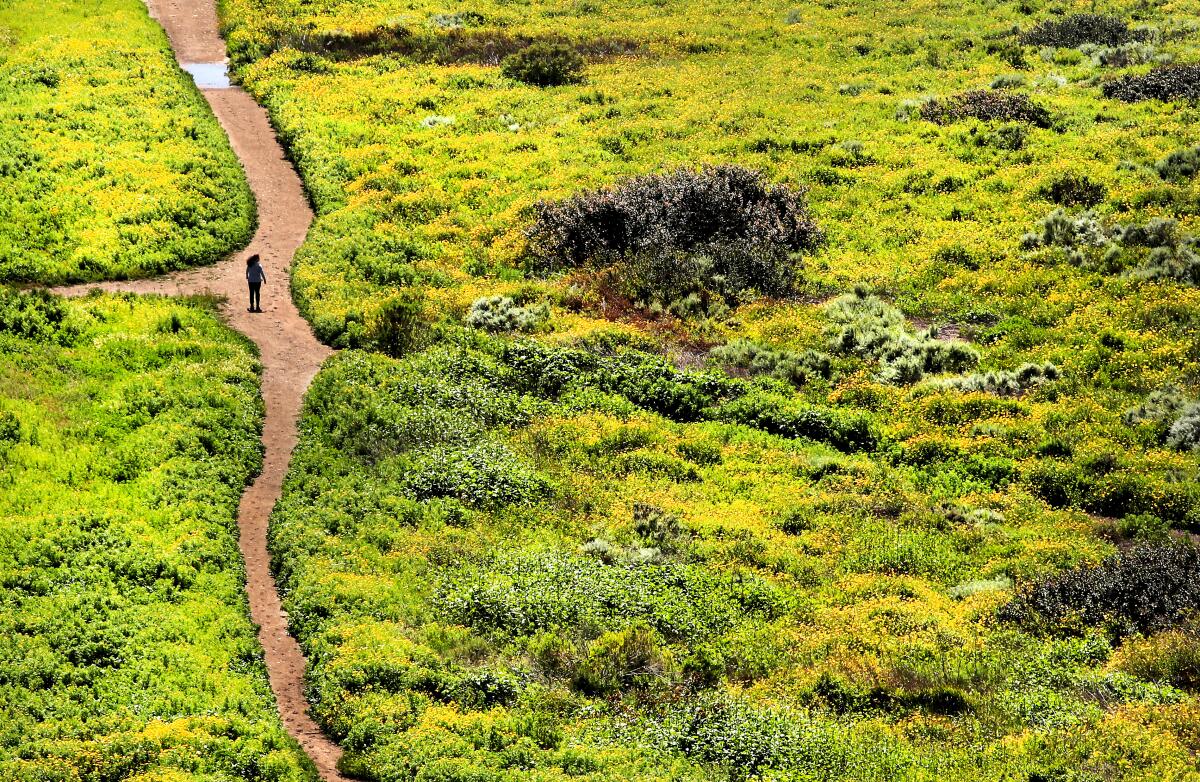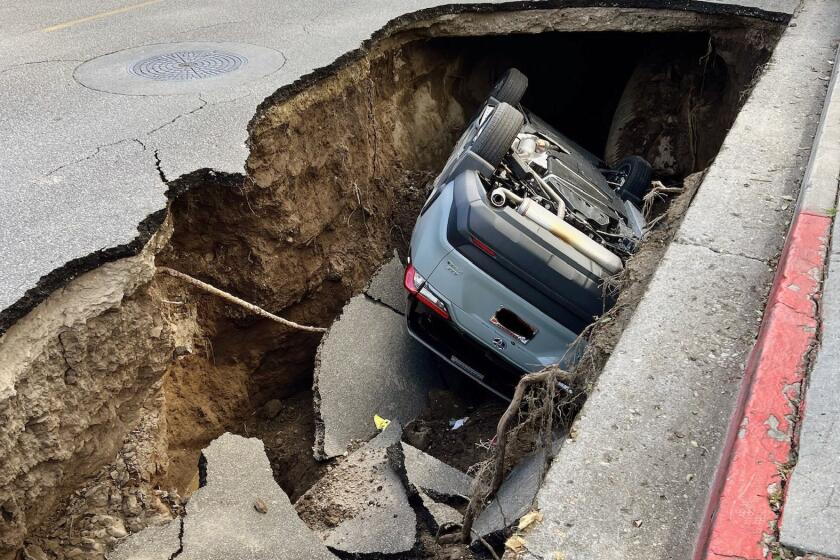Southern California dries out after latest storm. But how long will rain go away?

- Share via
A soggy week in Southern California will end with sunny skies and warmer weather — but for how long?
The National Weather Service warned that the Los Angeles area could see thunderstorms with brief heavy rain, small hail, gusty winds and lightning Thursday afternoon before the latest storm leaves the area.
Dry conditions with a warming trend are expected Friday and into the weekend, with high temperatures on Saturday reaching the lower 70s.
What happens next is not yet certain: Models show that yet another storm system could make its way down the center of the state around Monday, delivering showers and low-elevation snow to the mountains and interior areas, along with cooler temperatures across the Southland.
However, valleys and coastal areas may be spared more precipitation, said Mike Wofford, a meteorologist with the National Weather Service in Oxnard.
“Right now for the L.A. area, it looks like just a super small chance of rain, and if it does it’d be really light,” he said.
A Ventura County high school closed after a car fell into a sinkhole in front of campus. Other sinkholes appeared at Cal State Los Angeles and in L.A.
Instead of coming in from the ocean, the “inside slider” storm would stay more inland, so it doesn’t have as much moisture to work with, Wofford said.
“With these kinds of situations, sometimes we’ll see rain or precipitation in the northern part of the state, the mountains, the Sierra Nevada, maybe down to some of our local mountains in the interior, but it’s not really a favorable situation for rain getting down into the L.A. Basin area,” he said.
The stretch of dryness comes after the latest storm made a mess of conditions in several areas. Saturated soils, soaked with yet more rain, began to give way to landslides and sinkholes along freeways, including a portion of the 5 Freeway near Castaic and the 710 Freeway in Pasadena.
Sinkholes are formed when water or erosion makes cavities beneath the surface of the land, causing it to eventually collapse or depress. The state has seen a spate of sinkholes due to the recent rains.
“All of these are from the relentless rains — the soil has been undermined with water and it’s starting to slide now,” said California Department of Transportation spokesman Marc Bischoff.
The sinkhole near Castaic — located along the 5 Freeway about 2 miles north of Templin Highway — resulted in partial lane closures in both directions, with no estimated time of reopening. Aerial footage showed a widening hole as a portion of the freeway crumbled to pieces and slid down a hill.
Bischoff said geotechnical crews will evaluate the situation and make a plan for repair. “At some point, we’re going to have to remove that soil and then rebuild the slope,” he said.
In Pasadena, a smaller hole developed Wednesday on the southbound side of the 710 Freeway at the California Boulevard offramp, the Pasadena Police Department said.
City Councilman Steve Madison, whose district represents the area, said crews were working on a temporary repair that will allow single-lane access, but that full repairs probably won’t be completed until next week.
Meanwhile, crews blocked off a portion of Wrightwood Drive in Studio City on Thursday morning after a torrent of mud tumbled onto the roadway. The Los Angeles Fire Department reported similar issues during the storm, including a mudflow on Beverly Crest that was cleared Wednesday.
Caltrans on Thursday was also repairing a section of State Route 33 from Matilija Hot Springs Road to Lockwood Valley Road in Los Padres National Forest, which is closed until further notice “due to extensive storm damage.” Video shared by the agency showed trucks moving large boulders and piles of dirt from the roadway.
The right shoulder of the southbound Pacific Coast Highway is also closed from Topanga Boulevard to Coastline Drive in Malibu as Caltrans prepares to repair damage to the beachside slope by constructing a wall of boulders, the agency said.
The rain has also affected beaches, as stormwater can wash bacteria, chemicals, debris, trash and other hazards from city streets and mountain areas into the ocean. The L.A. County Public Health Department has extended a beach water use advisory until 9 a.m. Saturday, cautioning that “elevated bacteria levels in ocean water may cause illness, especially in children and the elderly.”
The latest storm dropped even more rain and snow on a state that has been pummeled by cold, wet weather for months. The Center for Western Weather and Water Extremes said it has recorded 31 atmospheric river events in California since the end of last year, including 11 weak, 13 moderate, six strong and one extreme storm.
While the storms eased drought conditions considerably, they also contributed to dozens of deaths, floods and infrastructure challenges for residents across the state. Angelenos used to sunnier, drier conditions are likely to see a return to form, at least for a little while.
“There’s really no strong signals for any sort of precipitation going all the way through like the middle of April,” Wofford said. “It does look like the odds are that we’re going to be in a fairly long dry stretch after this one.”
More to Read
Sign up for Essential California
The most important California stories and recommendations in your inbox every morning.
You may occasionally receive promotional content from the Los Angeles Times.












